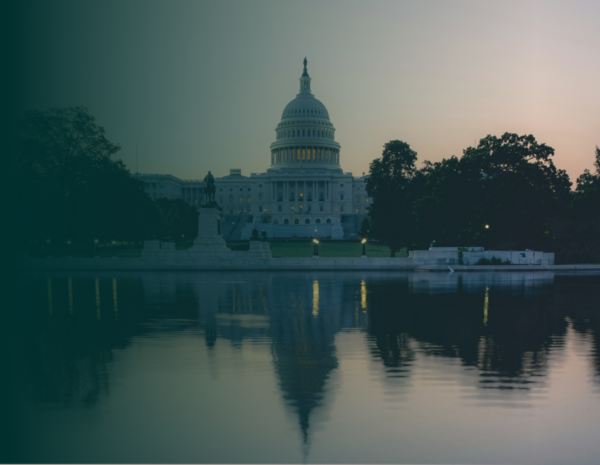When American children are taught about the three branches of government in grade school, they’re told a simple story. Congress makes the laws, the President enforces them, and the Supreme Court interprets them. But reality is not quite that simple. It’s true that the Supreme Court is not a legislative body and does not have the power to create policy directly. However, their work profoundly impacts policy formation and legislative processes nationwide.
Supreme Court decisions establish legal precedents that shape policy creation and implementation at the city, state, and federal level. This is particularly true of larger, landmark cases. From landmark rulings on civil rights and civil liberties to groundbreaking reinterpretations of existing laws, SCOTUS decisions can nullify laws, reinterpret existing policy, and open up new arenas of policy making. They can provoke public debate and organizing, spark new legislative action, or curtail Congressional authority. The Supreme Court is the final arbiter of the Constitution and the laws of the land. Their decisions ultimately set the framework for public policy development in the United States.
How Landmark Supreme Court Decisions Impact Public Policy
The Supreme Court may invalidate legislation or executive actions that they judge to be in conflict with the Constitution. It might seem paradoxical that this power of judicial review is not explicitly defined in the Constitution. Rather, it was established through an early Supreme Court Decision, Marbury v. Madison (1803). This decision formalized the Supreme Court’s influence over public policy.
Judicial Review and Marbury v. Madison (1803)
Perhaps no Supreme Court decision did more to forge the modern judiciary than Marbury v. Madison. The case originated in 1800 after Thomas Jefferson was elected President. Sitting President John Adams and his party attempted to undermine the incoming president’s authority by making major changes to the judiciary. They passed the Judiciary Act of 1801, which created many new judicial posts. Adams attempted to fill these posts with judges from his party, called “midnight judges,” before Jefferson’s inauguration.
One judge, William Marbury, did not receive his judicial commission before the inauguration. The new Secretary of State moved to prevent him from assuming office. Marbury sued, and his case eventually made its way to the Supreme Court.
The decision in Marbury v. Madison considered many factors, including:
- Whether Marbury had a right to his commission
- Whether he had an available remedy through the courts
- Whether the Supreme Court was the correct venue to address this remedy
Ultimately, the Court made an expansive decision, establishing the power of judicial review. The Court now held the power to evaluate the constitutionality of the other branches’ actions.
With this decision, the Court ruled that Congress does not have the power to pass laws that override the Constitution. SCOTUS gave the judicial branch the power to determine whether Congress’s actions were constitutional or not. Much of the Court’s influence over policy is derived from this decision and the power of judicial review. As Chief Justice John Marshall wrote in the opinion, “it is emphatically the province of the judicial department to say what the law is.”
Below, we’ll examine how the Supreme Court has impacted modern day public policy through an examination of some of the Court’s most significant decisions.
Brown v. Board of Education (1954)
Brown v. Board of Education (1954) is one of the most famous and impactful Supreme Court cases in American history. In a unanimous decision, the Court declared that state laws establishing separate public schools for Black and white students were unconstitutional. The decision overturned the “separate but equal” doctrine established in Plessy v. Ferguson (1896), which allowed racial segregation in public facilities if they were of equal quality.
Brown v. Board of Education’s impact on education policy was profound. Even today, school desegregation remains a major focus of education policy makers and litigators. The Brown decision was a massive victory for the Civil Rights Movement. It forced the end of de jure segregation in schools and laid the groundwork for de facto desegregation efforts nationwide.
In the years following, state and local policy makers undertook much of the practical work of desegregation. Integration was met with strong resistance in many parts of the country. Legislative sessions and school board meetings became battlegrounds. Education policy became one of the most hotly debated issues in the country.
The has since Supreme Court issued additional decisions to enforce desegregation. For instance, Brown II (1955) outlined the requirement for desegregation “with all deliberate speed.” These decisions catalyzed legislative and executive actions aimed at integrating schools, reshaping education policies, and fostering greater equality in access to education for all students. Brown v. Board of Education remains a landmark case, influencing discussions on racial equality and educational opportunity to this day.
Regents of the University of California v. Bakke (1978)
Twenty years after Brown v. Board, the Supreme Court issued another major ruling affecting education policy. Regents of the University of California v. Bakke (1978) addressed affirmative action in higher education. Allan Bakke, a white applicant, challenged the University of California Davis Medical School’s admissions policy, which reserved a specific number of seats for minority applicants. In a complicated decision, but the Court ruled against the use of racial quotas in admissions. It still allowed race to be considered as one of the factors in admissions decisions.
Bakke’s impact on education policy was profound. It affirmed the principle of diversity as a compelling state interest in higher education, allowing states to continue using affirmative action even as it banned the use of racial quotas. The ruling influenced university admissions policies across the country and encouraged the adoption of holistic review processes that consider various factors, including race, to achieve a diverse student body.
Bakke did not end the debate over affirmative action in education policy, however. Debates about the effectiveness and fairness of affirmative action continued as did legal challenges to affirmative action in education. Later Supreme Court decisions further refined the permissible use of race in admissions. They emphasized the importance of specific policies that promote diversity without resorting to quotas.
The Future of Affirmative Action in Higher Education
Just this year, however, the Roberts Court severely limited, if not ended, the use of affirmative action in higher education admissions. In SSFA v. Harvard and SSFA v. University of North Carolina, the Court ruled that race could only be considered in higher education admissions to allow an applicant to explain how their race impacted their character in ways that would have a concrete effect on the university. Many legal scholars and education policy experts claim that this exception is so narrow that the decision effectively ends the use of affirmative action in higher education.
These affirmative action cases, as well as many more not discussed here, illustrate how the Supreme Court can impact policy over time. The decisions dealing with affirmative action span many decades. They have, at different points, both expanded and narrowed the scope of what policymakers can do with regards to affirmative action in higher education.
District of Columbia v. Heller (2008)
In 2008, the Supreme Court issued a landmark 2nd Amendment ruling in the case of District of Columbia v. Heller. The ruling struck down several of Washington D.C.’s strict gun laws, which included a near ban on the possession of handguns by private citizens. In Heller, the Court ruled for the first time that the Constitution protects American citizens’ right to possess firearms in the home for self-defense and protection. Before Heller, many legal scholars endorsed a narrower interpretation of the Second Amendment, focused on the right to organize militias rather than to protect one’s home and/or personal property.
The decision alarmed many city policymakers. Increased efforts to combat gun violence in the 1980s and 1990s led many large American cities to pass laws that curtailed or outright banned private possession of handguns. Heller put these existing gun control laws at risk of legal challenge. Many were subsequently challenged and overturned, most notably Chicago’s handgun ban.
The Heller decision significantly impacted gun control policy, curtailing states’ and cities’ ability to restrict handgun access. Many handgun bans had been in effect for decades. Chicago’s law, for instance, was nearly thirty years old. Suddenly, these policies could not be enforced.
The ruling does not prevent all gun control legislation, however. It simply requires more ingenuity from lawmakers. Though outright handgun bans are no longer considered constitutional, other regulations on handgun ownership may still be enacted. Rather than banning private handgun ownership, cities have instead passed strict background check requirements or mandatory waiting periods. With one avenue of gun control legislation no longer available to them, lawmakers have gotten more creative, responding to the Court by devising other policy solutions to address violent crime and gun violence.
Get Started With Plural to Analyze the Policy Impact of Landmark Supreme Court Decisions
Top public policy teams trust Plural to help them analyze shifts in public policy and the impact of current events, such as landmark Supreme Court decisions, on said policy. Plural users:
- Access superior public policy data
- Be the first to know about new bills and changes in bill status
- Streamline your day with seamless organization features
- Harness the power of time-saving AI tools to gain insights into individual bills and the entire legislative landscape
- Keep everyone on the same page with internal collaboration and external reporting all in one place
Interested in getting started? Create a free account or book a demo today!
More Resources for Public Policy Team
Key Benefits of AI for Lobbying & Advocacy
Want to be able to explain the benefits of artificial intelligence for lobbying and advocacy? Everyone is talking about AI. And we get it, it’s not simple to understand. But as an AI-powered organization, Plural is here to help you get the most out of advancements in AI to make your job as a policy […]
2025 Legislative Committee Deadlines Calendar
Staying on top of key deadlines is manageable in one state, but if you’re tracking bills across multiple states, or nationwide, it quickly becomes overwhelming. That’s why we created the 2025 Legislative Committee Deadlines Calendar. Stay ahead of important dates and download our calendar today. Get started with Plural. Plural helps top public policy teams get […]
End of Session Report: Florida 2024 Legislative Session
The 2024 Florida legislative session saw significant activity in the realm of insurance and financial services, reflecting key themes of consumer protection, market stability, and regulatory modernization.




